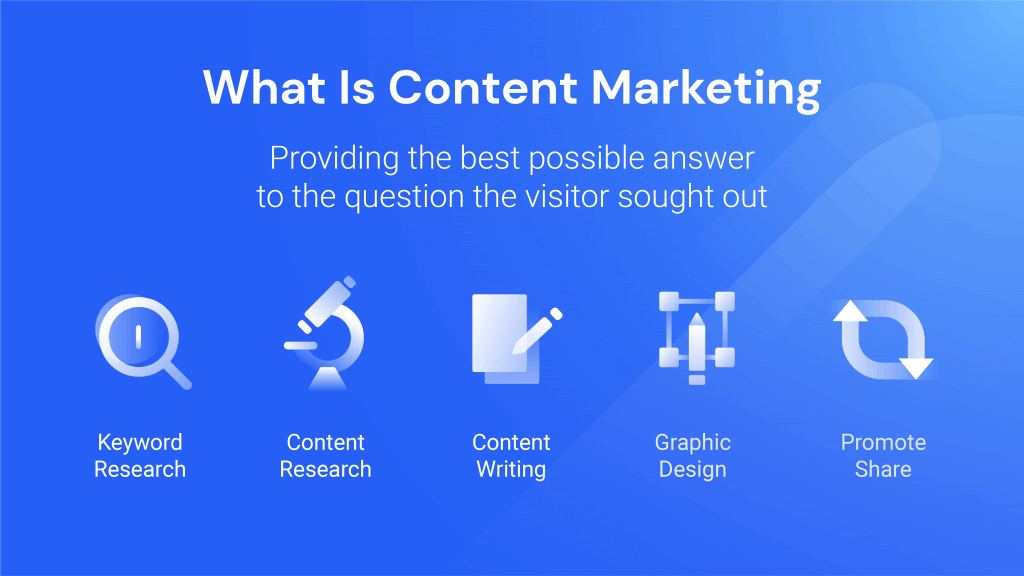Content Marketing Strategy
Your customer doesn't want to listen to us telling them how wonderful your services are, or how fabulous your product is.
No. What they are really interested in is how we solve their problem.
It is as simple as that.
This is the sole purpose of content marketing - to give away your expertise in a way that will help your audience 1) solve their problem, 2) save them time, 3) showcase that you can do this for them faster and better.
This kind of content doesn't naturally flow out of you when you have scheduled it in your diary. You need a plan. You need a content marketing strategy.
The best way to do this is with data.
But first, what is a content marketing strategy?
Essentially, a content marketing strategy is your plan of attack on deploying valuable content to your target audience.
This strategy will guide you in creating content that is insightful, educational, entertaining, you name it. Regardless of your tone or topic, it is geared at attracting prospects to your website, so that your funnel is loaded at every stage of the buyer's journey.

Building your content strategy to support your sales and marketing funnel
Most sales and marketing teams understand that the future-customer goes on a journey with the brand before deciding to engage or convert into a customer.
It typically looks like this:
- Top of funnel - Awareness and problem recognition. Interest and information search. Content is focused on lead generation and brand awareness.
- Mid funnel - Consideration and evaluation. Intent and commitment. Content helps consumers make their decision - features and benefits.
- Bottom of funnel - Conversion and purchase. Loyalty and advocacy. Content is focused on a great customer experience and brand reinforcement.
Here is how your content marketing strategy could look for each stage of the customer journey.
Top of Funnel - Creating content that drives awareness and solves the problem
This is to address your customers' point of pain.
- Blogs allow you to highlight your expertise, educate, advise, and answer common questions.
- Social media posts are a great way to showcase your content.
- Infographics can be used to break up swaths of raw data.
- Video can be more compelling than words on a page.


Middle of Funnel - Fostering consideration
This content helps your prospects make the right decision.
- eBooks or whitepapers and free guides are a great way to build your credibility and position yourself as the trusted guide to solving your customers' problem.
- Webinars are another great way of sharing insights and IP while engaging with prospects, without them having to sit through a hard-sell ad.
Bottom of Funnel - Conversion and loyalty
This content helps your prospect convert into a customer, and remain loyal to the brand.
- Email marketing that is segmented and personalised allows you to directly engage with your customers' specific needs.
- Blogs give your customers the latest news, tips, and insights that help them continue to solve their need.
- Case studies are fact-based content that reinforces your customers' decision and trust.
- Testimonials are another great way of showing customer satisfaction and brand success.

How to create a content marketing strategy that works
- Start with your customer in mind. Identify your customer personas of your ideal customer and write content that will appeal to them. Your content must address their needs, their emotions, their wants and aspirations. It must educate them and entertain them. Above all, it must be authentic. Your customer persona will ensure you write for them, and not for you.
- Audit your content. Start by auditing what content you do have. Mapping your existing content against your sales funnel will help you identify your gaps and opportunities.
- Do research / Listen. Use your social media, your competitor analysis, your own content performance data, your customer feedback, and your support teams to understand what content needs and opportunities there are.
- Create a content schedule or calendar. This is the most practical way of ensuring you are always sending out fresh content into your customer universe. Your calendar can be calendar months or it can be based on season or industry events such as Black Friday or Back to School.
- Structure your brief. New content is specific and has a job. Define the brief so that your content always hits the mark. It should include primary intent, target persona, funnel stage, focus keywords, call to action, link strategies, length, and research resource suggestions.
- Optimise for search engines. Most people find what they want online. It starts with a search. Your content needs to be written with this in mind. Content clusters around a specific theme or keyword you want to rank for ensure you create content that will do the job you need it to.
- Identify content distribution channels. Now that you've created the content, you need to tell the world about it! This could be your social media channels, your email database, as well as editors and publications.
- Set SMART goals. If you hope to know if your content marketing strategy has worked, you need to be able to measure it. Top of funnel content success metric is clicks and visit duration. Mid funnel might be email address, subscribe, download. Bottom of funnel is conversion.
- Create content. Now all that is left is for you to create your content!
